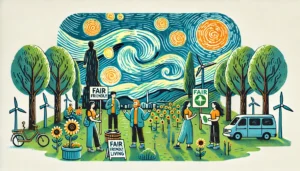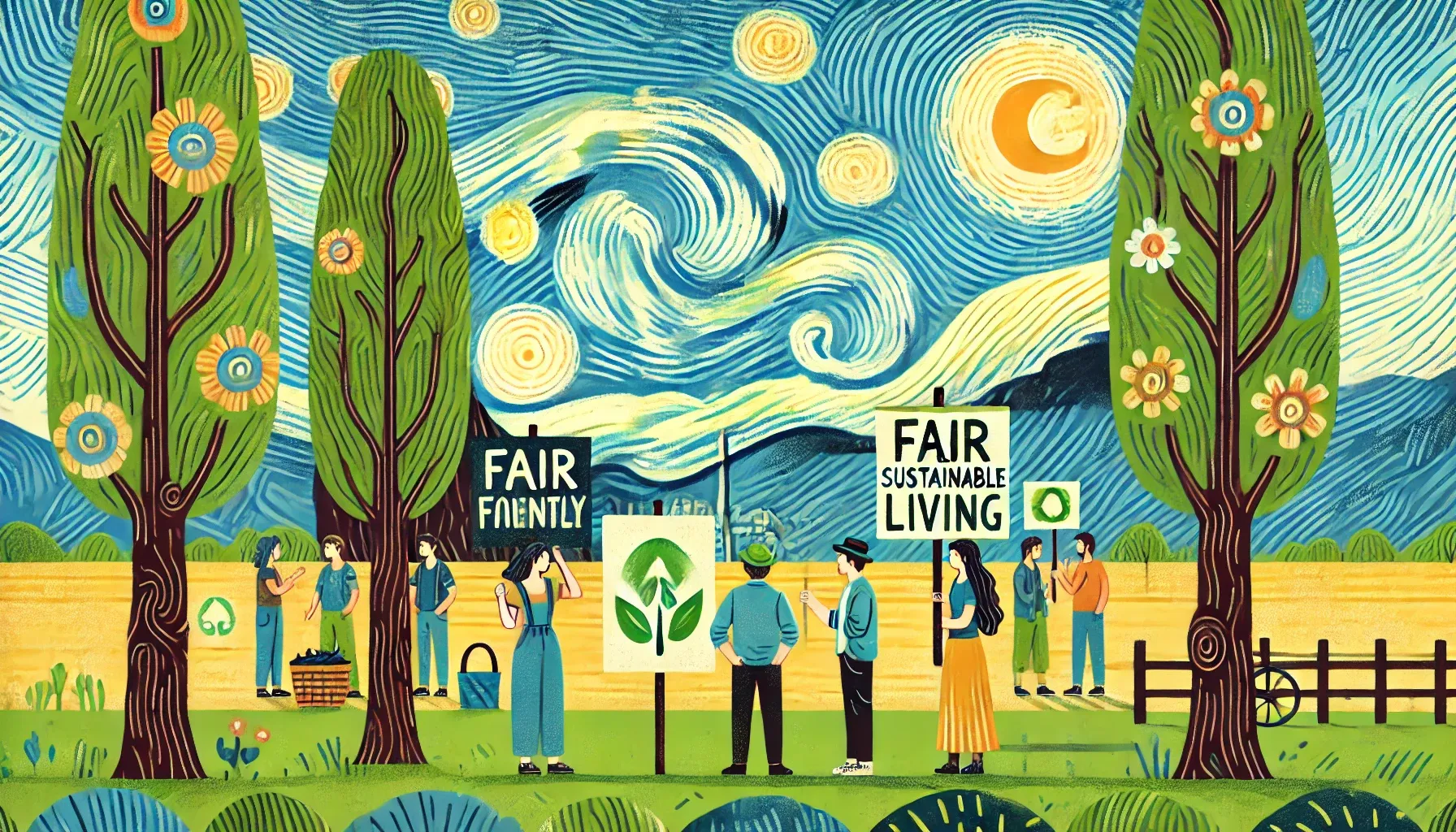The Icon – Vincent van Gogh, the classic Dutch post-impressionist painter, stands out in art history. His intense, colorful paintings – which spoke to generations of artists and activists alike – have endured. Environmentalists, like many others around the world, have for years used Van Gogh’s art as a symbol of their cause. The following is an examination of Van Gogh and the deep impact his life, work, and philosophy has had on the modern eco-activism front.

Van Gogh’s Artistic Legacy
The Essence of Van Gogh’s Art
The paintings of Van Gogh are famous for their distinctiveness, unique and expressive brushwork, using a thick dark palette knife tone of Romanticism which is an emotional outflow. His works like “Starry Night,” “Sunflowers,” and “The Sower” show a deep respect for nature along with an understanding of the human condition. Eco-activists champion Van Gogh’s evocation of the natural world and its contradictions, finding in his art inspiration for their battle with challenges concerning ecological conservation.
Philosophical Underpinnings
Van Gogh’s letters to his brother Theo and fellow artist Emile Bernard are full of appreciation for the diversity that a few years living in England had opened up, where he felt part of nature as well. He frequently referred to the landscapes he painted with veneration, pointing out how much importance he placed on the wonderful inheritance that is nature. It is a philosophical perspective that naturally condenses with the values of eco-activism, thought to address concerns relating to conservation and protection for tomorrow’s keepers.
Eco-Activism: The Power of Van Gogh
Symbolism in Protests
They have become a restitution emblem yet in recent years, Van Gogh’s artworks are used as symbols for environmental protests. One of the most well-known happened in October 2022 when protesters from a group called Just Stop Oil poured tomato soup over Van Gogh’s ‘Sunflowers’ at London’s National Gallery. The protest was aimed at pointing out the dire state of climate change and our massive reliance on fossil fuels.
The Whys of the Protests
The selection of Van Gogh in these protests is not at random. Eco-activists appreciate Van Gogh’s art because it captures the essence of nature and human sentiment. Activists are seeking to cause a popular emotional reaction utilizing his paintings and raise the stakes connecting environmental ruin. Over the past two weeks, activists calling themselves ‘Extinction Rebellion’ have occupied locations in central London to create scenes of public disruption and debate around climate policy.
The Role of Art in Activism
Art has always had its place as a part of social and political movements. This work, full of passion and visual brutality, can be a potent weapon for any green activist inspired by Van Gogh! Activists can use his painting as a means to overcome the universal appeal of its subject matter in order that they may reach an even greater audience with their message, yet from another angle. The connection of art to activism serves also as a reminder that protecting the environment is not only scientific and economic, but equally cultural and moral resistance.
Examples of Eco-Activist Movements
Just Stop Oil and Sunflowers Incident
Two activists from Just Stop Oil similarly covered a Van Gogh for conclusive effect: on October 14, 2022 the duo entered London’s National Gallery and chucked tomato soup at Sunflowers. The action was directed against new oil and gas development, approved by the UK government. The activists were arrested, but the action generated a great deal of media coverage and launched an extensive conversation about whether this type of protest was appropriate or effective.
Climate Protests in Europe
Across Europe environmental campaigners have targeted other iconic artworks such as Mascagni’s opera cycle Cavalleria Rusticana and Petrarch in Venice. Italian activists superglued themselves to Botticelli’s “Spring” at the Uffizi Gallery and Germans flung mashed potatoes onto Monet’s Grainstacks. The climate movement has pushed it into the global agenda with these controversial actions.
Criticism and Controversy
Making art in environmental protests has been a highly contested issue. Critics say that it depersonalizes would-be supporters and is damaging to the green cause overall. They say vandalism of public art is self-defeating and undermines the activists. But advocates of these tactics say urgent times require drastic measures to wake people up – and that the ends justify the means.
What Van Gogh Meant For The Brown Stripe
Inspiring a New Generation
Today, we can all be radical activists: because Van Gogh is way more influential than a bunch of yobs with spray cans. Standing as an avant-garde artist and philosopher, his ideologies now feed a new wave of eco-activists striving to preserve nature. Activists refer to Van Gogh, who lived and painted in the area for a long time due to its natural beauty and his focus that art could change things. They hope to inspire curiosity about the outdoors and support for environmental causes by building his legacy into their activism.
Educational Initiatives
Apart from direct actions, eco-activists in France employed Van Gogh’s art for ecological education. Museum and gallery exhibitions have investigated the symbiotic relationship between art and nature with Van Gogh employed as a case study. These programs are designed to raise awareness of how climate change affects the world and inspire visitors to help in their own lives.
Artistic Collaborations
This intersection of art and activism has also spurred on new partnerships between artists and ecological organizations. Under new circumstances emanating partially from his legacy, contemporary artists are producing, often for eco-activist causes they believe in or themes addressing the environment. By collaborating, environmentalists can help get the word out louder and to more parts of society than before, which helps drive engagement with new audiences about climate change.
Conclusion
Vincent van Gogh’s influence on eco-activists is proof of the sort of transformative reach art can have. Today, environmentalists promoting the preservation of the planet resonate with his belief in scheduled art and connection to nature. The contentiousness of this plot twist – appropriating his art into a protest – is essential to the gravity and urgency environmental activists from cities far, wide, brave or ignoble will travel in their persuasion.
But his legacy lives on in the inspiration for and mobilization of eco-activists, a follow-up of reminders that safeguarding our environment is not limited to science or politics—but also embedded within its ethno-cultural desert we now recognize as moral responsibility. In both programmes, nature and cultural stories acting for the planet, as we move full throttle into our future pathways, it is a sign that art in activism will be pivotal going forth to activate change and provide impact.
